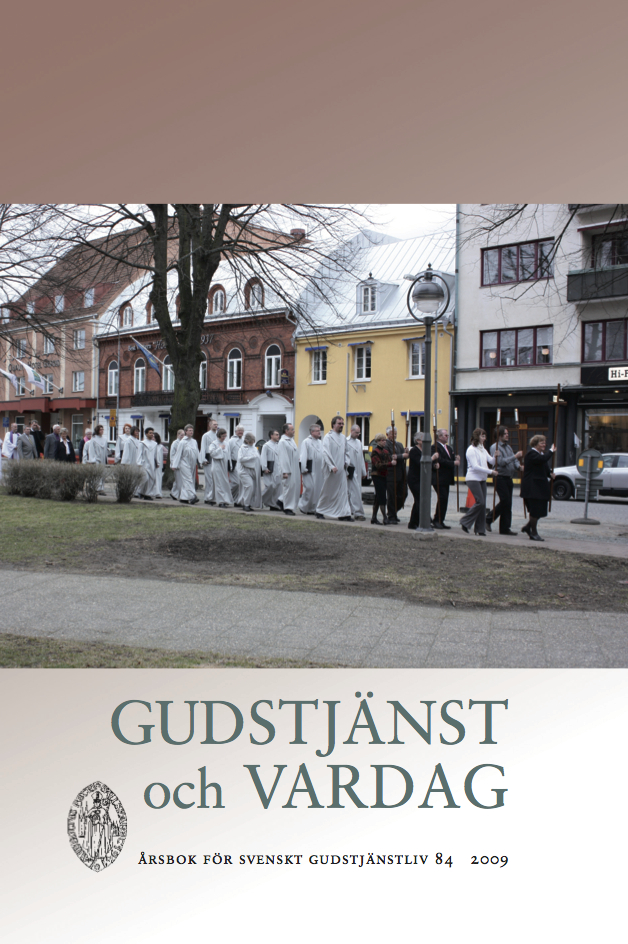Från vardag till vardag. Den teologiska betydelsen av gudstjänstens Samling och Sändning
Abstract
From Weekday to Weekday. The Theological Meaning of the Gathering and the Sending in the Sunday Service
The article takes its starting point in the contemporary context of the Nordic Lutheran folk churches, characterized by a low degree of regular church attendance and a sharp divide between the secular culture that dominates everyday life and the Christian world view brought to life in the liturgy. This modern divide between liturgy and everyday life has implications for the celebration of liturgy and especially for the beginning of the liturgy, leading the individual into the corporate worshipping context of the Christian church, and for the ending, that sends the participants back to their ordinary lives. The shaping of these parts of the liturgy requires a well reflected theology concerning the relation between liturgy and everyday life.
The first and last parts of the liturgy however have theologically quite un-informative headings in the present handbooks of the Nordic folk churches. In the order for high mass in Den svenska kyrkohandboken 1986, for example, the first part is simply called Inledning, meaning introduction or commencement, and the last part called Avslutning, that means closure or ending. Equivalent terms are used in all the Nordic Lutheran folk-churches. This terminology points to the fact that these Lutheran churches have spent a lot of energy on the theological understanding and liturgical expression of the Word and the Meal, while a similar interest has not so far been directed to the gathering to and the sending from worship, even though these aspects of worship have far-reaching ecclesiological implications.
A renewed theological interest in the initial and final parts of the liturgy may however be detected in recent worship books, developed both in the Nordic and the North American context, where Gathering and Sending have been introduced as headings for the beginning and the end of the liturgy. This is the case in Evangelical Lutheran Worship of the Evangelical Lutheran Church of America from 2006, as well as in the proposal for a revised handbook for the Church of Sweden in 2000, which was, however, never adopted. The same headings are also used in Kyrkohandbok för Missionskyrkan (The Mission Covenant Church) from 2003 and Gudstjänstboken, published 2005 on behalf of Interact, the Pentecostal Movement, the Swedish Alliance Mission and the Baptist Union of Sweden.
The second part of the article takes the terminological change noted as a starting point for a theological discussion on how Gathering and Sending relates worship and everyday life. This is done with the help of the ecumenical discussion over a common ordo, a kind of grammar for the shape of Christian liturgy.
Key words: Liturgy, ecclesiology, gathering, sending, ordo, Church of Sweden, Nordic folk churches
Downloads
Publicerad
Nummer
Sektion
Licens
© författarna, Laurentius Petri Sällskapet för svenskt gudstjänstliv samt Artos & Norma bokförlag. Det är tillåtet att kopiera och använda material ur Svenskt Gudstjänstliv för forskningsändamål om källan anges. För övriga ändamål kontakta respektive artikelförfattare samt förlaget. Särskilda restriktioner kan gälla för bildmaterial.


